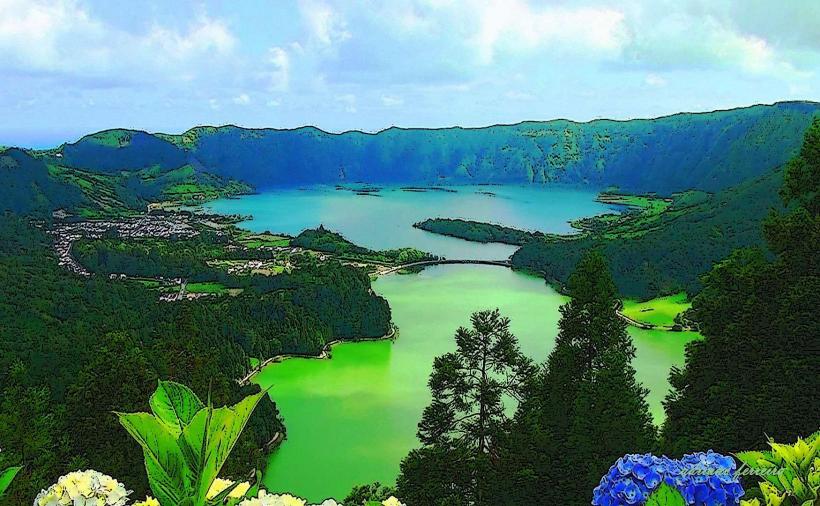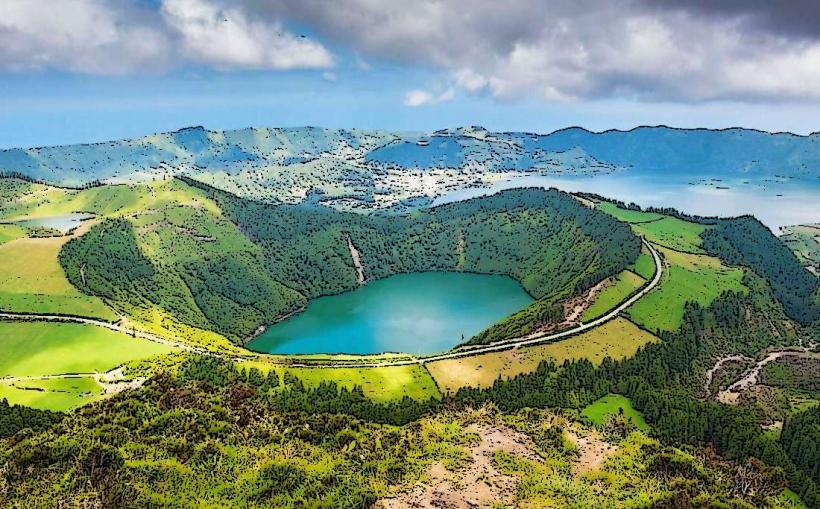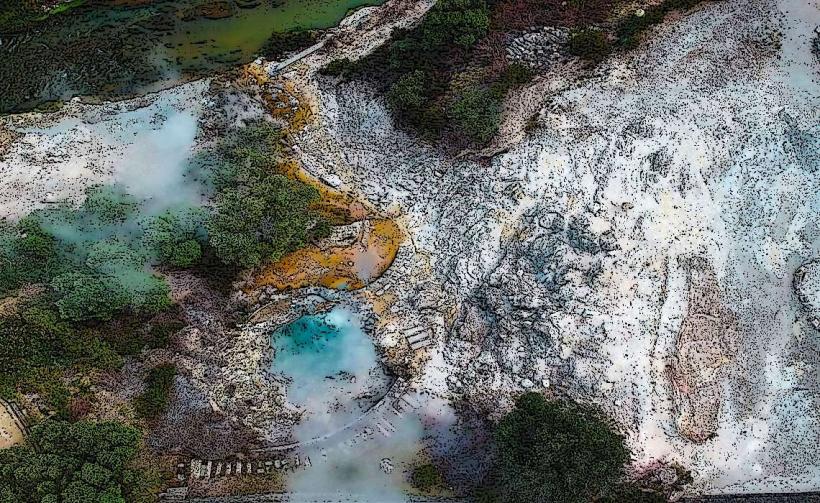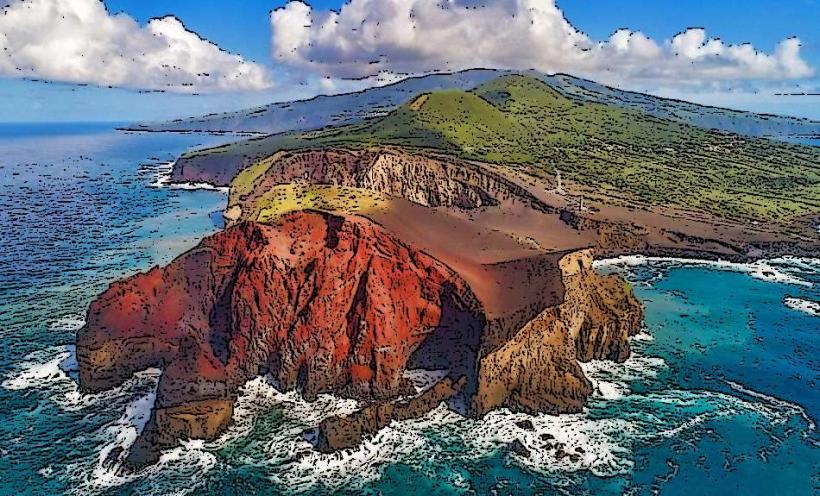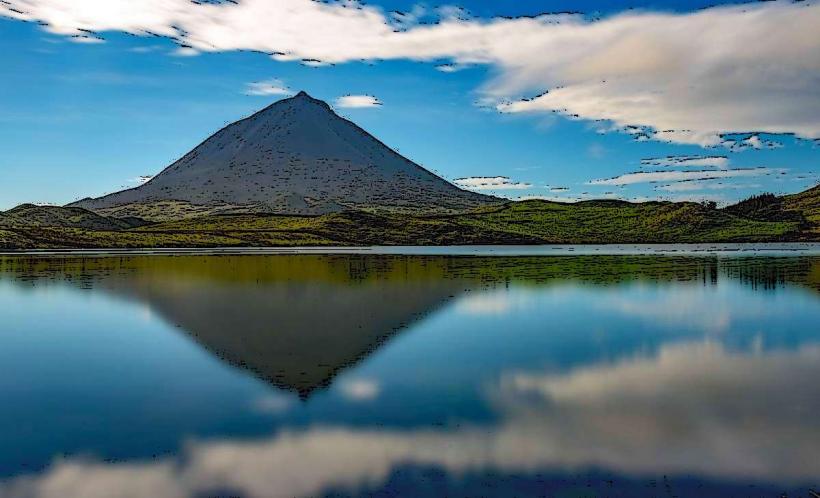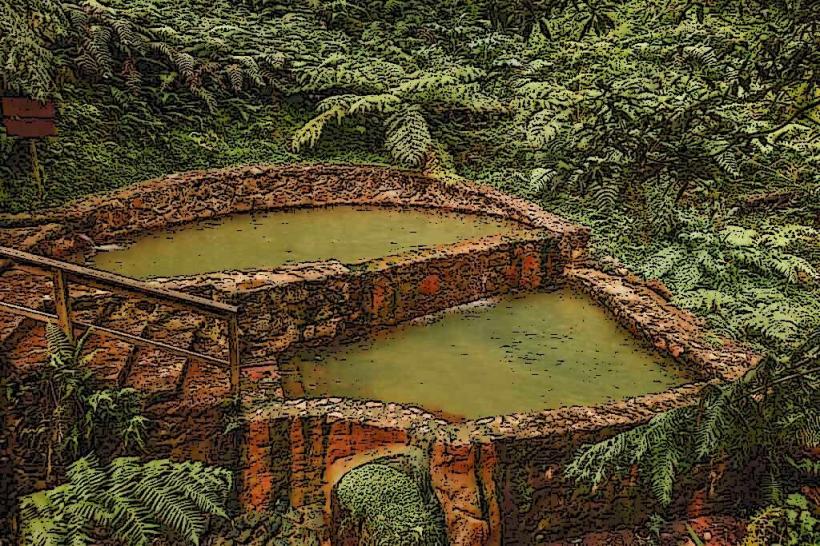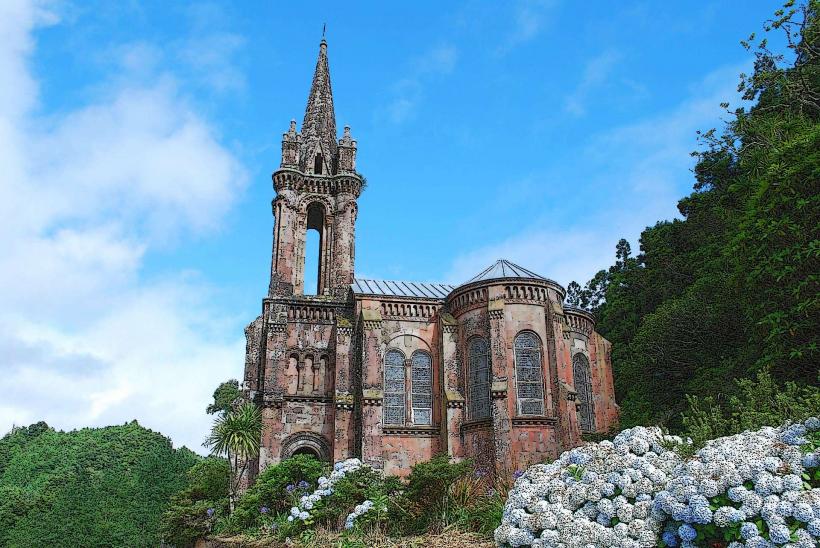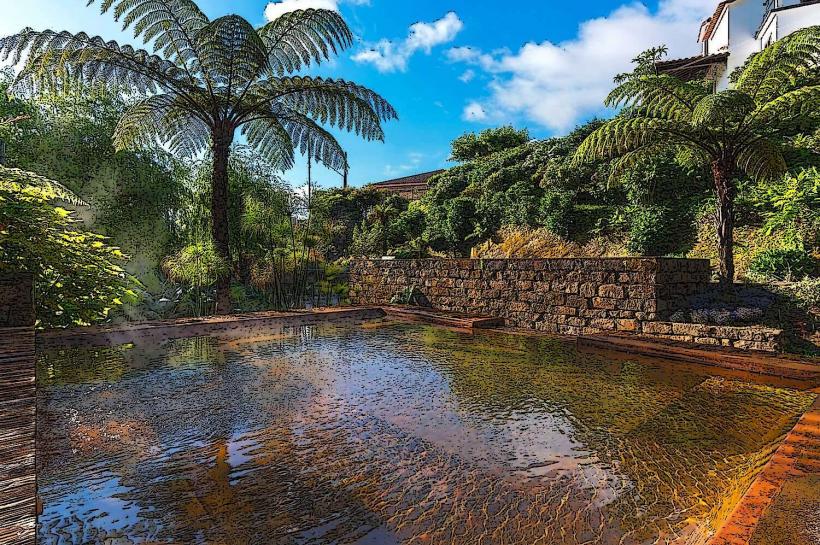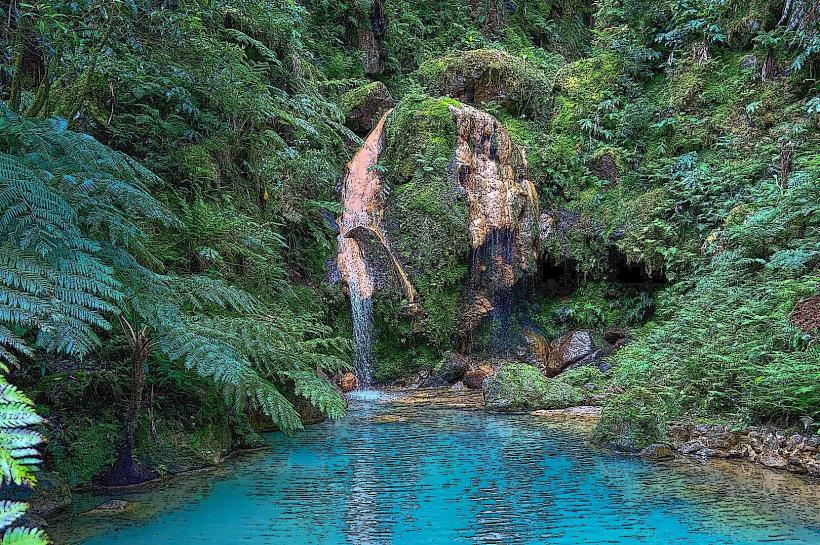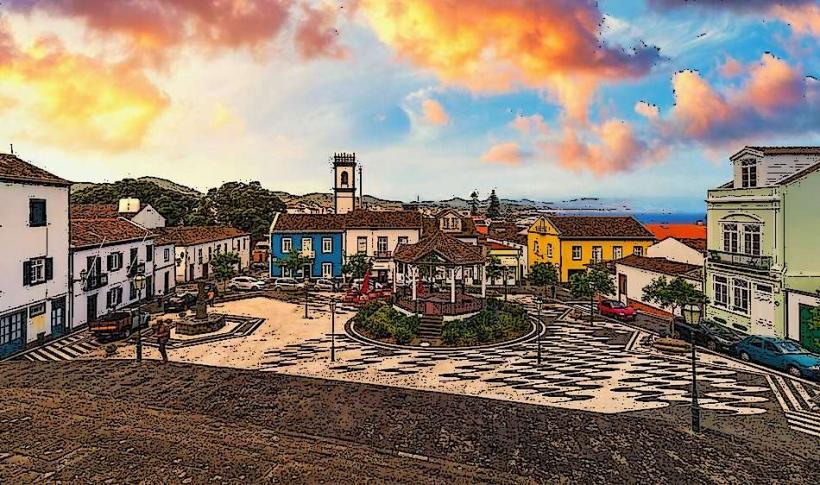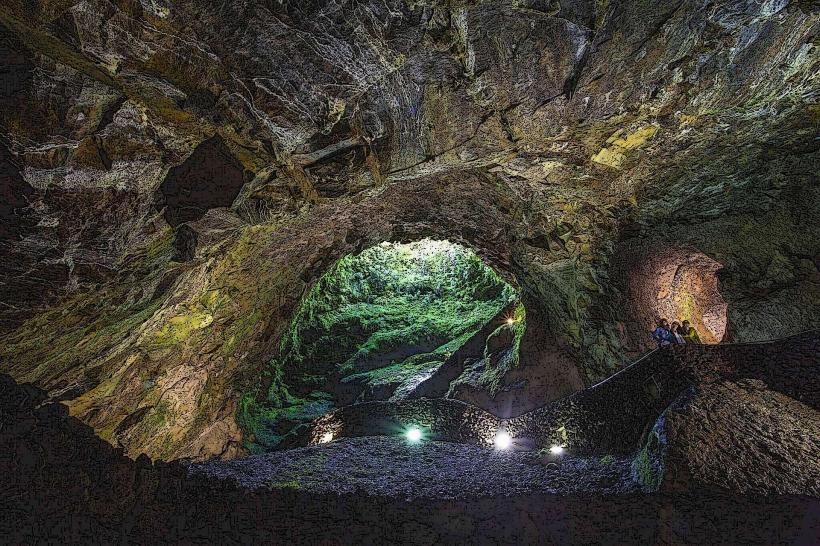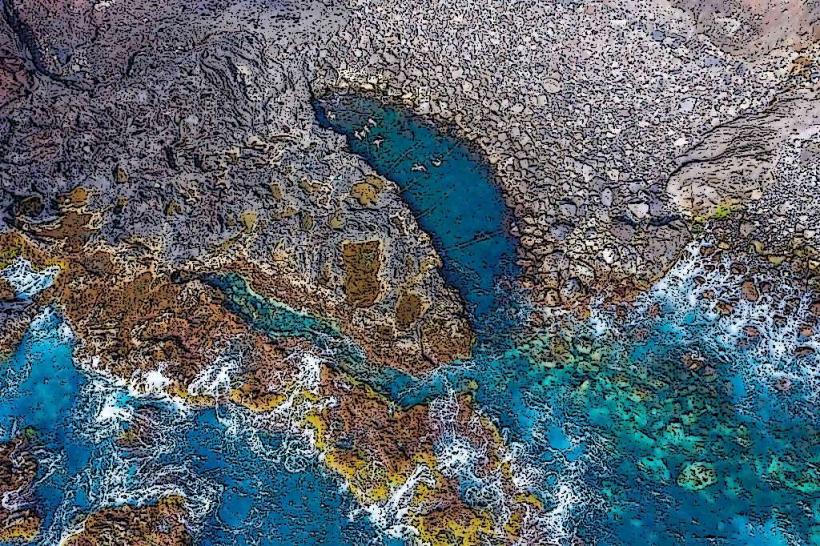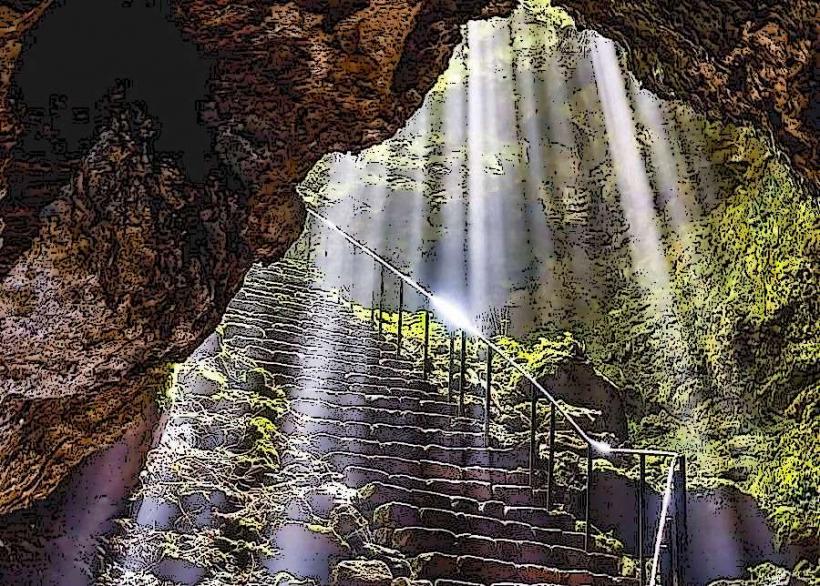Information
Landmark: Angra do HeroismoCity: Azores
Country: Portugal
Continent: Europe
Angra do Heroísmo is the capital city of Terceira Island in the Azores and one of the oldest and most historically significant cities in the archipelago. Declared a UNESCO World Heritage Site in 1983, Angra do Heroísmo is known for its rich history, architectural beauty, and strategic importance as a port city during the Age of Exploration.
1. Historical Significance
- Age of Exploration: Angra do Heroísmo played a critical role during the 15th and 16th centuries as a key stopover for ships traveling between Europe, Africa, Asia, and the Americas. It was strategically located as a safe harbor for resupplying, trading, and protection from storms.
- Title of "Heroísmo": The city received the title "do Heroísmo" ("of Heroism") in recognition of the bravery of its inhabitants during the Portuguese Liberal Wars (1828-1834), when they resisted Miguelite forces loyal to King Miguel. Angra supported the liberal movement and became a stronghold for Queen Maria II.
- UNESCO World Heritage: Angra’s designation as a UNESCO World Heritage Site was due to its unique urban layout, historical buildings, and preservation as a colonial-era maritime city.
2. Architecture and Landmarks
- Sé Cathedral of Angra do Heroísmo: The largest church in the Azores, the Sé Cathedral dates back to the 16th century and features a combination of Gothic and Baroque architectural elements. Its interiors include ornate woodwork, altars, and religious art, making it a significant religious and historical site.
- Fortress of São João Baptista: Built on Monte Brasil, a volcanic peninsula overlooking the city, this large fortress was constructed by the Spanish in the 16th century to protect against pirates and invaders. The fortress has thick walls, watchtowers, and views of Angra, offering a glimpse into the military history of the Azores.
- Palácio dos Capitães-Generais: This historic palace served as the residence for the Captain-Generals, the representatives of the Portuguese monarchy in the Azores. The building features a beautiful mix of Baroque and Renaissance architecture and is still used as a governmental building today.
- Town Hall (Paços do Concelho): Angra’s Town Hall is located in a beautiful 19th-century building with neoclassical features. Its elegant façade, painted walls, and historic clock tower are iconic landmarks in the city’s main square, Praça Velha.
3. Monte Brasil
- Natural Park and Hiking Trails: Monte Brasil is a volcanic peninsula extending into the Atlantic, forming a natural harbor for Angra. The area is now a protected nature reserve with scenic hiking trails, picnic areas, and panoramic views of the city and ocean.
- Historical Significance: The fortress on Monte Brasil provided protection for the city and was crucial in defending Terceira from invasions. The peninsula itself has historical and cultural significance, symbolizing the island's resilience and maritime heritage.
- Scenic Overlooks: From the top of Monte Brasil, visitors can enjoy breathtaking views of Angra do Heroísmo and the surrounding coastline. This spot is popular for photography, picnics, and nature walks.
4. Cultural and Religious Sites
- Impérios: Unique to Terceira and the Azores, these small chapels are dedicated to the Holy Spirit and are used in religious festivals known as “Festas do Espírito Santo.” These festivals celebrate community, charity, and faith and are a deeply rooted tradition on Terceira.
- Convento de São Gonçalo: This historic convent, founded in the 16th century, houses a museum with religious artifacts, art, and a collection of intricate azulejos (Portuguese tiles). The convent’s architecture and interior reflect the religious and artistic heritage of the Azores.
- Museum of Angra do Heroísmo: Housed in the former Convent of Saint Francis, this museum provides insight into the city’s history, from the Age of Exploration to modern times. Exhibits include religious art, naval artifacts, and displays of the Azorean way of life.
5. Festivals and Traditions
- Sanjoaninas Festival: Held annually in June, this is one of the largest cultural festivals in the Azores. The Sanjoaninas includes parades, concerts, traditional bullfighting, and celebrations of Saint John. The streets come alive with vibrant decorations, traditional costumes, and a festive atmosphere.
- Festas do Espírito Santo: The "Festivals of the Holy Spirit" are celebrated across the Azores, but they hold special significance on Terceira. These festivals, marked by processions, blessings, and communal feasts, celebrate unity, charity, and faith, symbolized by the crowning of the Holy Spirit and the sharing of traditional foods.
6. Beaches and Natural Pools
- Prainha Beach: Located near the city center, Prainha is a small but popular sandy beach with calm waters, making it a convenient spot for locals and visitors to swim, sunbathe, and relax.
- Natural Pools at Negrito: Just outside Angra, the natural swimming pools at Negrito are carved into volcanic rock formations, providing a unique and picturesque place to swim with views of the ocean and Monte Brasil.
7. Cuisine and Local Specialties
- Alcatra: This traditional dish from Terceira is a slow-cooked beef stew marinated with spices, garlic, wine, and sometimes even bacon, all baked in a clay pot. Alcatra is typically enjoyed during festivals or special occasions and is a must-try for visitors.
- Queijadas Dona Amélia: These are small, sweet cakes made with sugar, cinnamon, and corn flour, created in honor of Queen Amélia’s visit to Terceira in 1901. They are a local delicacy, perfect for enjoying with coffee.
- Local Wine and Cheese: Terceira also has its own distinct cheese and wine varieties, with many products reflecting the volcanic soil and maritime climate that contribute unique flavors to Azorean cuisine.
8. UNESCO World Heritage Status
- Urban Layout: Angra’s layout follows a Renaissance grid plan, rare in its time, which organized the city into functional zones. Its layout, combined with its well-preserved architecture, reflects the planning and development ideals of its era.
- Restoration and Preservation: After a major earthquake in 1980, much of Angra was damaged, but extensive restoration efforts were undertaken to preserve its historical buildings and heritage. The city’s UNESCO status has helped in maintaining its architectural integrity and cultural legacy.
9. Exploring Angra do Heroísmo
- Guided Tours: Many guided tours are available that explore Angra’s historical sites, gardens, and landmarks, offering insight into the city’s rich past and vibrant cultural life.
- Strolling the Streets: Simply walking through the streets of Angra allows visitors to appreciate its unique mix of traditional Portuguese and colonial architecture, with colorful facades, cobblestone streets, and decorative azulejo tiles.
- Gardens and Parks: The Duke of Terceira Garden (Jardim Duque da Terceira) is a beautiful public garden with walking paths, sculptures, and exotic plants. It’s a relaxing place to enjoy the natural beauty of the island right in the heart of the city.
Angra do Heroísmo is a remarkable city that embodies the Azorean spirit of resilience, exploration, and community. Its historical importance, scenic beauty, and preserved architecture make it a captivating destination for anyone interested in the Azores’ past and present.

